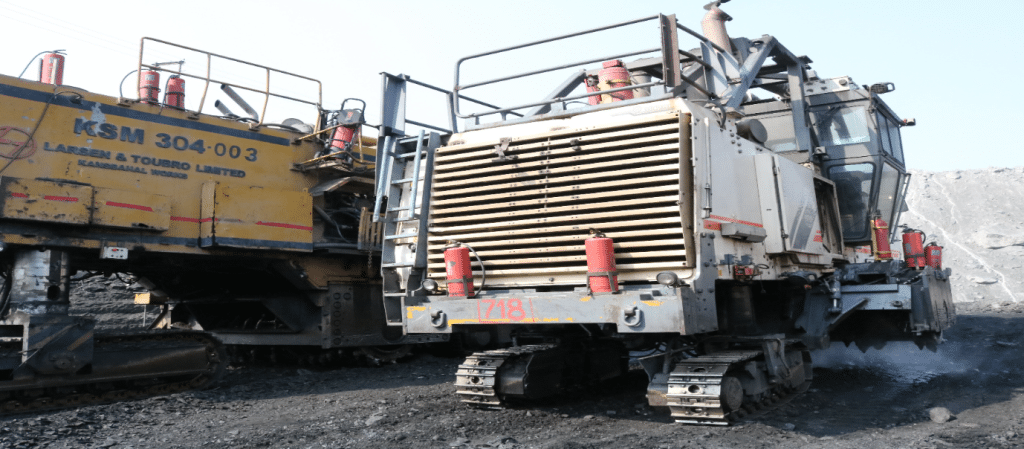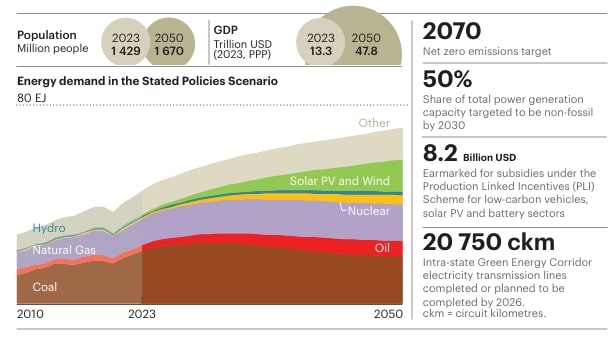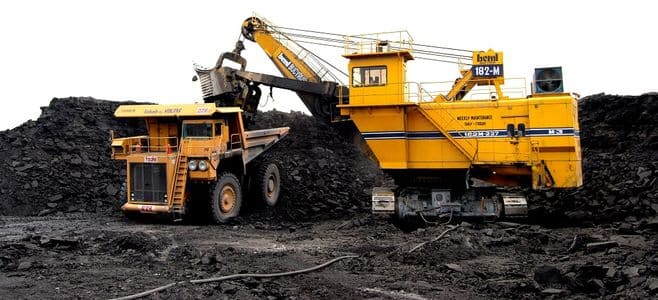India’s energy demand is growing in leaps and bounds. The country is progressing ahead and investing heavily in renewables. However, with this rising energy demand, coal is once again holding its ground stronger in the nation. The recent World Energy Outlook report revealed that,
“Coal is set to retain a strong position in the energy mix in India over the next decades.”
The Stated Policies Scenario (STEPS) assessed that approximately 60 GW of coal-fired capacity will be added to the net of retirements by 2030. This will surge electricity generation from coal by more than 15%.
The Coal Scenario of India
India is the world’s second-largest producer of coal, so coal is abundantly available in India. It holds a major 55% share of the country’s energy demand. The reality is, that replacing coal with 100% renewables is not happening anytime soon. The most significant factor that’s fueling coal demand is the rising population.
This manifests energy usage at homes, buildings, factories, and offices directly. Only Renewables like solar, wind, and hydro might not fulfill such a massive energy demand in a heavily populated country. This is why India’s indigenous sector – coal is so important.
World Energy Outlook has figured out:
“Generation from coal remains over 30% higher than that from solar PV even in a decade in which solar PV accounts for twice as much capacity, owing to the lower capacity factor of solar installations.”
2035 Coal Consumption Forecast
Some of the most energy-consuming sectors are going to experience a massive demand uptick. They are:
- The iron and steel sector can grow by 70%
- Cement output is expected to surge by 55%
- The stock of air conditioners can become 4-5X
Thus, the consumption of coal in industry can grow by 50% by 2035.

Source: World Energy Outlook
Will Rising Demand Ignite a Carbon Emission Surge?
This is the most inevitable question, and IEA has come up with an interesting analysis:
India’s GDP growth rate is currently 7.8%. Subsequently, the government has ambitiously set a target to have the third largest economy in the world by 2030, after the U.S. and China.
Any form of economic growth involves expanding infrastructure. Development in spaces and structures, new constructions, and increased transportation will require cement, steel, concrete, iron, fuel, power, etc. This can cause a sharp rise in energy demand and use of fossil fuels.
So, the answer is eventually becoming clear- and carbon emissions can substantially rise in the future as India strives to have a more powerful economy.
The US EPA quoted,
“India’s coal emissions are estimated to be 22 MtCO2e in 2020 and are expected to reach 45 MtCO2e in 2050.”
If Coal has a Future; India is Sustainably Mining It
However, the coal and lignite undertakings are responsibly handling the environmental impact of the coal mining process. The most widely used mitigation measures include recycling mined-out areas and carrying out extensive plantations in coal-rich regions.
The Ministry of Coal has been seriously taking steps to restore the land disrupted by mining. They have stabilized such lands and put them into useful purposes. The process is precisely known as, “ecological reclamation of mined land”. Some such measures are:
- reforestation of overburden dumps
- afforestation around mines
- restoring local flora and fauna
Notably these activities are planned in advance and the closure plans are approved by the ministry. They conduct them sidewise to minimize the carbon footprint post-closure of coal mines.
Improving the Air Quality
The Ministry highlighted innovative techniques like seed ball plantation, drone-based seed casting, and Miyawaki plantation that have been introduced in several mines. These techniques combat air pollution by “trapping” the enormous volume of dust particles blown off during mining. The entire process is monitored through remote sensing technology to ensure maximum efficiency.
Additionally, the latest technologies like surface miners, wheel washing, fog cannons, mist sprayers, mechanized road sweepers, CAAQMS, wet drilling, and dust suppression systems are also deployed to minimize dust generation. This improves the air quality of the surrounding areas of a coal mine.
Image: Surface Miner with water jets, Gevra OCP, SECL

Source: Ministry of Coal
India’s coal companies are also implementing several energy-efficient measures to reduce their carbon footprint. The Ministry of Coal said,
“By implementing various energy efficiency measures, Coal/lignite PSUs have envisaged to create additional carbon offset potential of 1 Lakh Ton/annum.”

Source: World Energy Outlook
The Bureau of Energy Efficiency (BEE) Announces Offset Mechanism to Combat Emissions
As we discuss sustainability in the Indian coal mining sector, another important piece of news that made headlines is India’s national carbon market and trading carbon credits. We discovered from S&P Global what the Bureau of Energy Efficiency (BEE) said recently.
BEE’s Director, Saurabh Diddi, stated that by March 2025, they will unveil the methodologies for sectors included in phase 1 of the domestic voluntary market under India’s Carbon Credit Trading Scheme.
S&P Global noted that India has immense opportunities in the domestic voluntary market and is the largest supplier of carbon credits in the existing international voluntary carbon markets.
The methodologies can encourage industries and corporations to commit to “voluntary” emission reduction targets. Diddi added that such pledges would help boost demand for carbon credits. Simply put, the whole purpose is to generate demand in the domestic offset market.
This diverse range of decarbonization strategies including sustainability in Indian coal mining are meant to achieve net zero emissions by 2070. Additionally, these offset mechanisms can reduce 45% of its GHG emissions by 2030.

